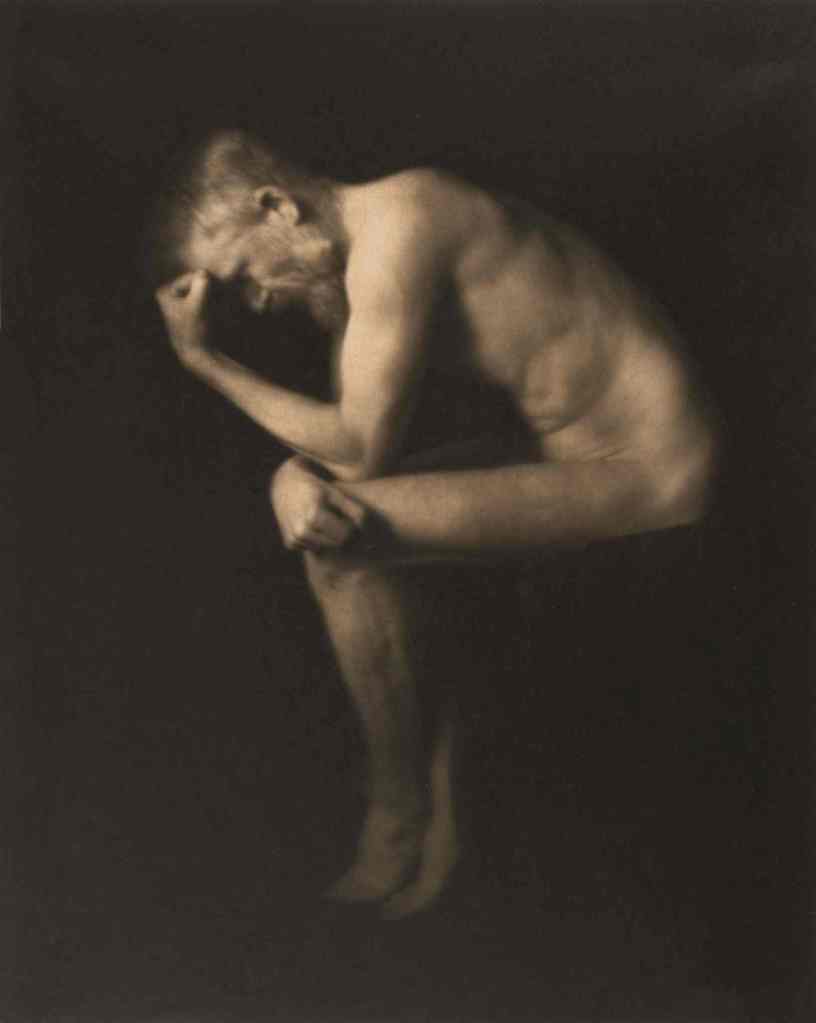An accomplished photographer by the age of eight, Alvin Langdon Coburn was an American photographer that invented a kaleidoscopic mirror to take ‘vortographs’.
He took up photography at the age of eight after being given a 4 x 5 Kodak camera. At the age of sixteen, he was introduced to pictorialism by his cousin F. Holland Day, an internationally known photographer. He recognised his talent and both mentored him and encouraged him to take up photography as a career.
After moving to London in 1899, he met with Day who had been invited by the Royal Photographic Society to select prints from the best American photographers for an exhibition in London. He brought more than a hundred photographs with him, including nine by Coburn, who at this time was only 17 years old.
In 1901, he lived in Paris for a few months to study with Steichen and Robert Demachy. He then toured France, Switzerland and Germany for the remainder of the year with his mother. On their return to the US in 1902, he began to study with Gertrude Käsebier in New York. He then opened a studio on Fifth Avenue but spent much of his time studying with Arthur Wesley Dow at his School of Art in Massachusetts.
The following year, Coburn was elected as an Associate of the Linked Ring. The Linked Ring was a photographic society created to propose and defend that photography was just as much an art as it was a science, motivated to propelling photography further into the fine art world. This election made him the youngest member and one of only few Americans to be honoured.
In May of the same year, he was also given his first one-man show by the Camera Club of New York and in July Stieglitz published one of his works in Camera Work.
In 1904, Coburn returned to London with a commission from The Metropolitan Magazine to photograph the country’s leading artists and writers. The assignment included G.K. Chesterton, George Meredith and H.G. Wells, A. Rodin and a nude portrait of George Bernard Shaw posed as Rodin’s famous sculpture The Thinker. His portraits were collected and published in the books Men of Mark (1913) and More Men of Mark (1922).



He remained in London throughout 1905 and much of 1906, taking both portraits and landscapes around England. He photographed Henry James for the Century Magazine and returned to Edinburgh for a series he intended to be visualisations of Robert Louis Stevenson’s Edinburgh: Pituresque Notes.
In 1913, Coburn exhibited five photographs collectively titled New York from its Pinnacles showing street scenes viewed from above. These photographs especially The Octopus, New York display a novel use of perspective and an emphasis on abstract patterns.



In 1917, he began taking the first completely nonobjective photographs called vortographs to associate them with the vorticists, a group of English writers and painters who had been influenced by Cubism and Futurism, as Coburn himself had been. Vortographs were a deliberate to prove that photographers could fracture space into abstract compositions as Cubist painters and sculptures had done.

During the 1920’s, Coburn moved to England and became increasingly interested in mysticism and he abandoned the camera in favour of spiritual pursuits. However, he resumed photography in 1950, to produce a number of mysteriously ambiguous photographs.
One Comment Add yours